-
 Raven CuffSterling Silver
Raven CuffSterling Silver- .75"w
SOLD -
 Eagle CuffCarved Sterling Silver
Eagle CuffCarved Sterling Silver- 1"w
SOLD -
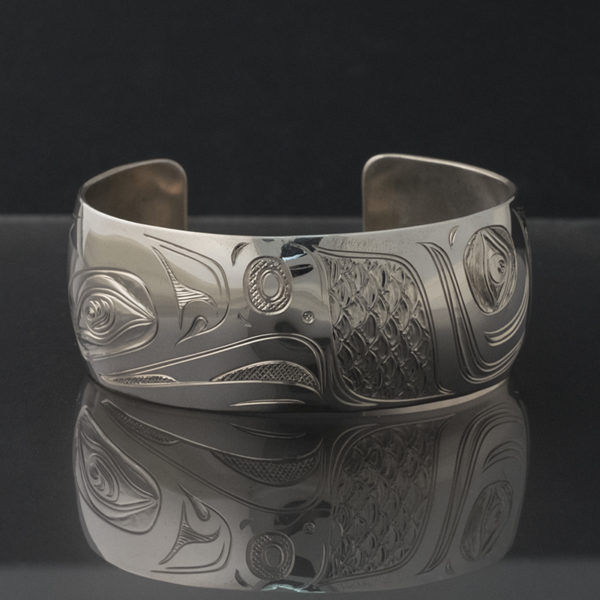 Silver Eagle CuffSterling Silver
Silver Eagle CuffSterling Silver- 1"h
SOLD -
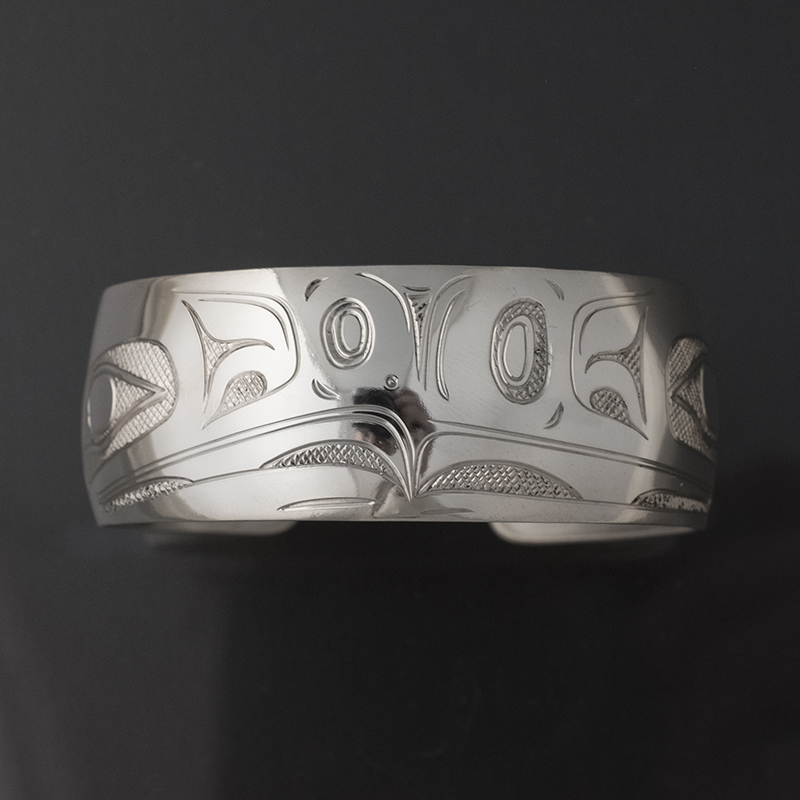 Silver Lovebirds CuffSterling Silver
Silver Lovebirds CuffSterling Silver- 1"h
SOLD -
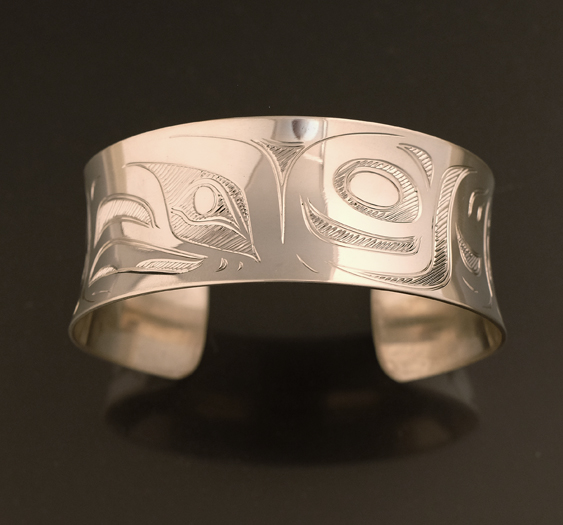 Eagle Concave CuffCarved Sterling Silver
Eagle Concave CuffCarved Sterling Silver- 1"w
SOLD -
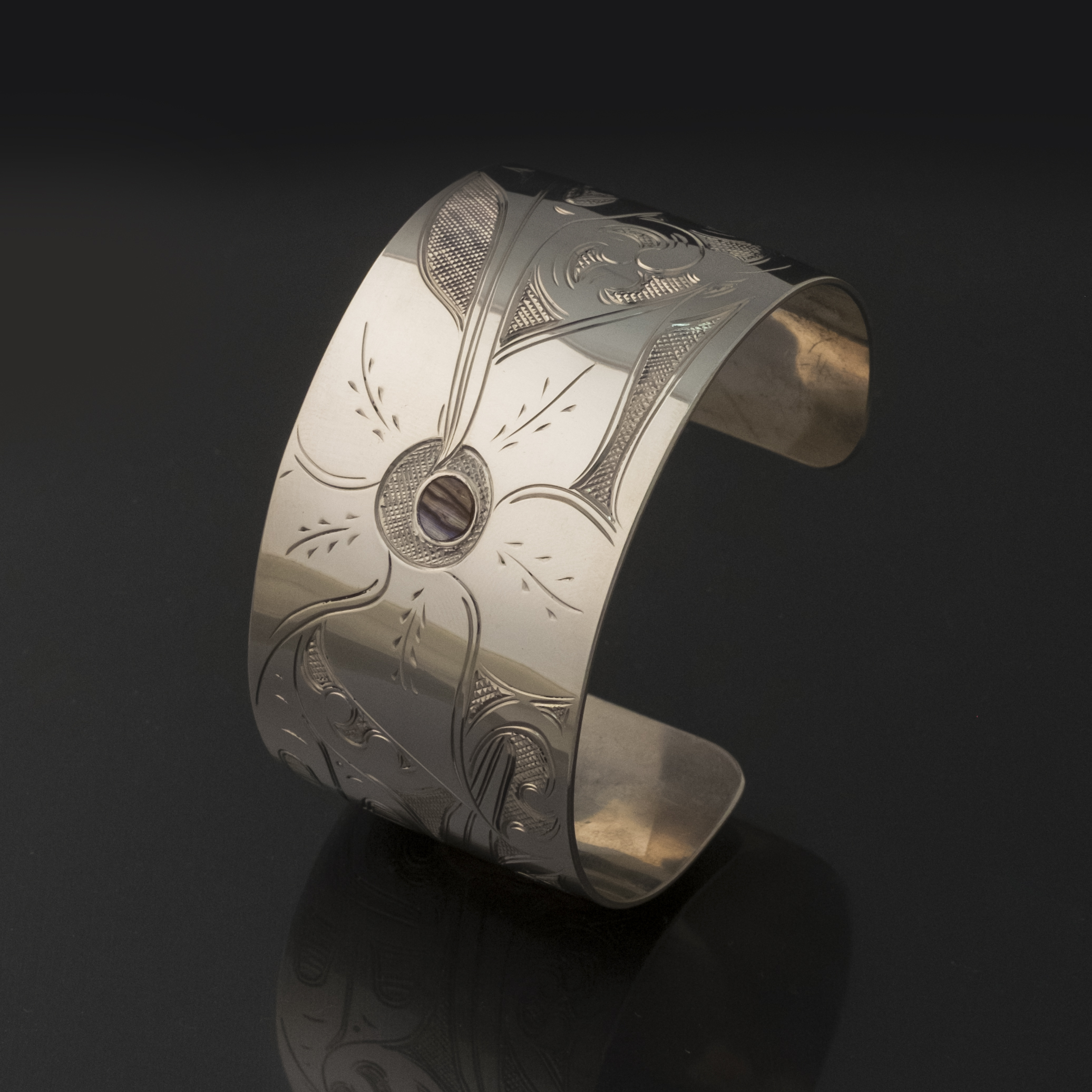 Hummingbirds with Sitka Rose CuffCarved Sterling Silver, Abalone
Hummingbirds with Sitka Rose CuffCarved Sterling Silver, Abalone- 1.5"h
SOLD -
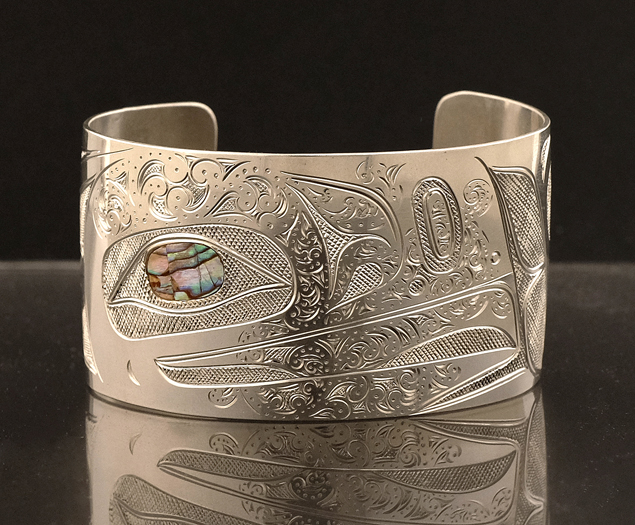 Raven Releases the Light CuffCarved Sterling Silver, Abalone
Raven Releases the Light CuffCarved Sterling Silver, Abalone- 1.5"w
SOLD -
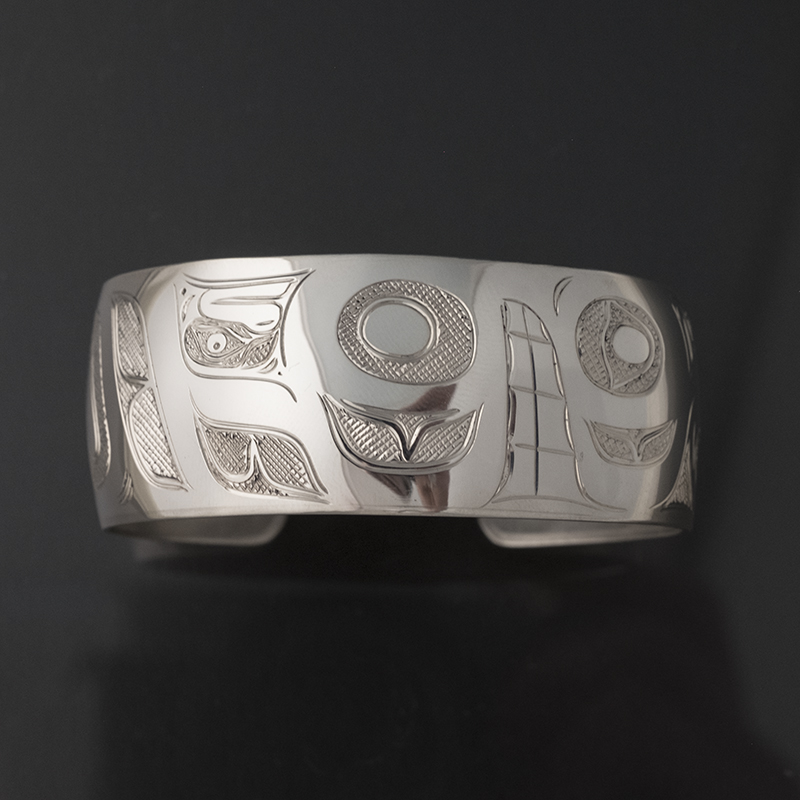 Eagle in Killerwhale Tail CuffCarved Sterling Silver
Eagle in Killerwhale Tail CuffCarved Sterling Silver- 1"w
SOLD -
 Sitka Rose CuffCarved Copper
Sitka Rose CuffCarved Copper- .5"w
SOLD -
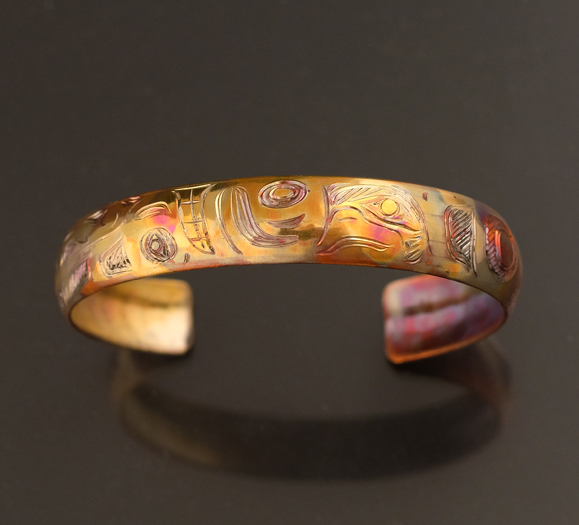 Killerwhale and Eagle CuffCarved Copper
Killerwhale and Eagle CuffCarved Copper- .5"w
SOLD -
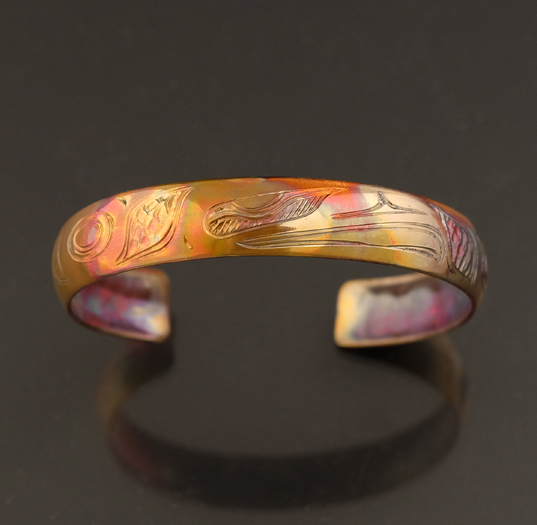 Raven CuffCarved Copper
Raven CuffCarved Copper- .5"w
SOLD -
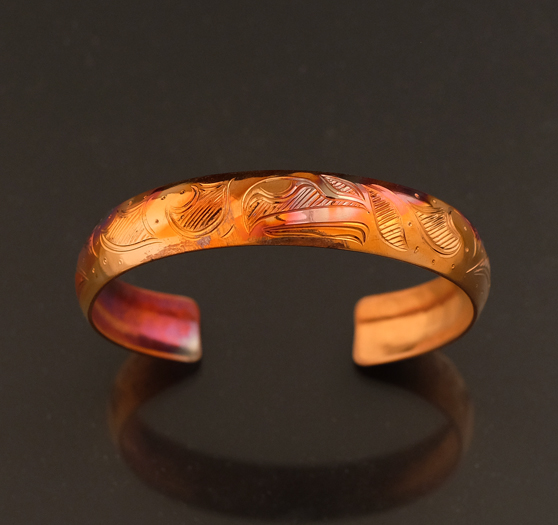 Eagle in Clouds CuffCarved Copper
Eagle in Clouds CuffCarved Copper- .5"w
SOLD -
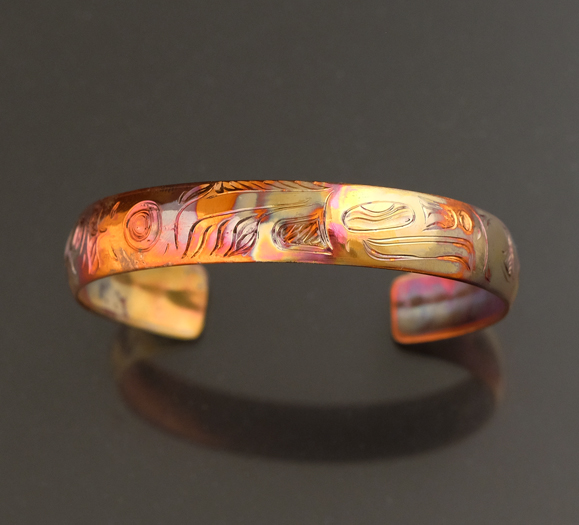 Eagle in Clouds CuffCarved Copper
Eagle in Clouds CuffCarved Copper- .5"w
SOLD -
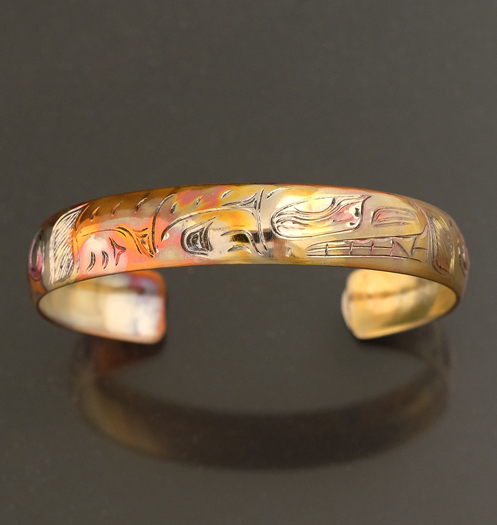 Bear CuffCarved Copper
Bear CuffCarved Copper- .5"w
SOLD -
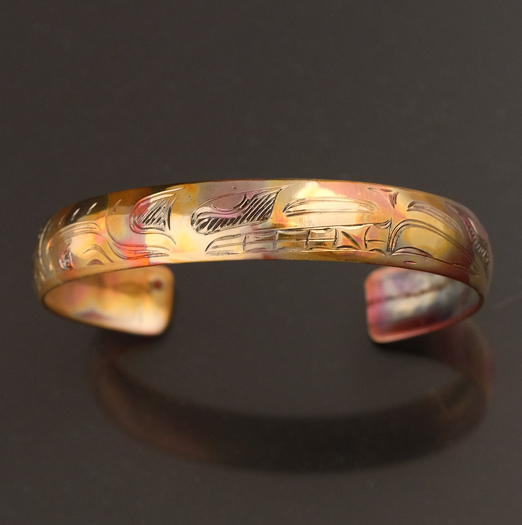 Bear and Raven CuffCarved Copper
Bear and Raven CuffCarved Copper- .5"w
SOLD -
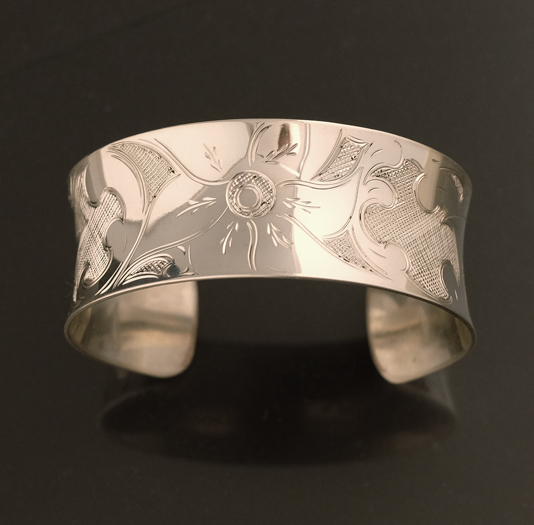 Sitka Rose CuffCarved Sterling Silver
Sitka Rose CuffCarved Sterling Silver- 1"w
SOLD -
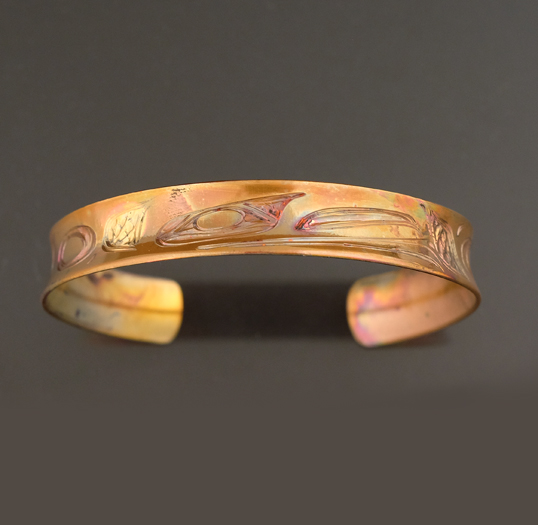 Raven Concave CuffCarved Copper
Raven Concave CuffCarved Copper- .5"w
SOLD -
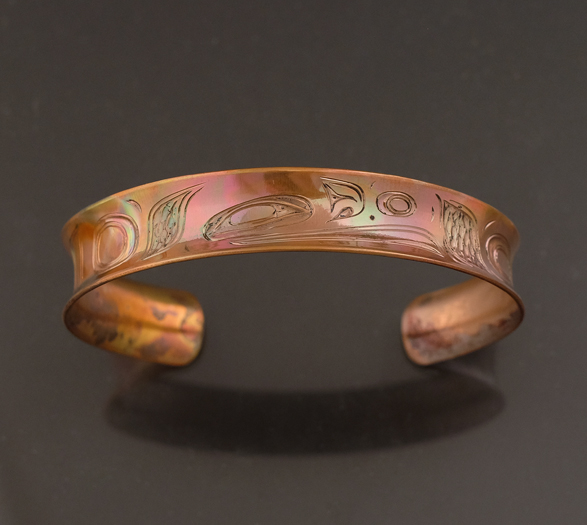 Raven Concave CuffCarved Copper
Raven Concave CuffCarved Copper- .5"w
SOLD -
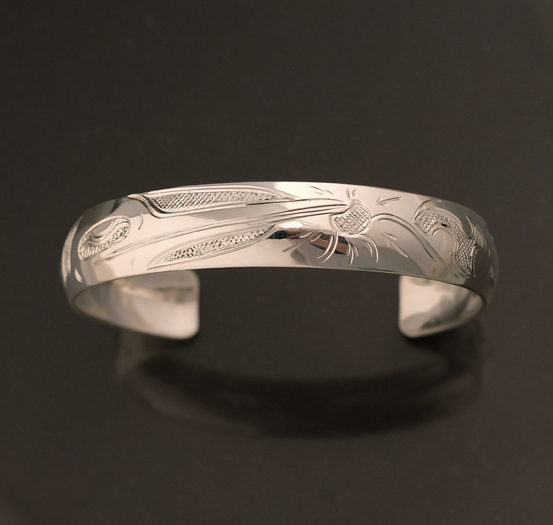 Hummingbird with Sitka Rose CuffCarved Silver
Hummingbird with Sitka Rose CuffCarved Silver- .5"w
SOLD -
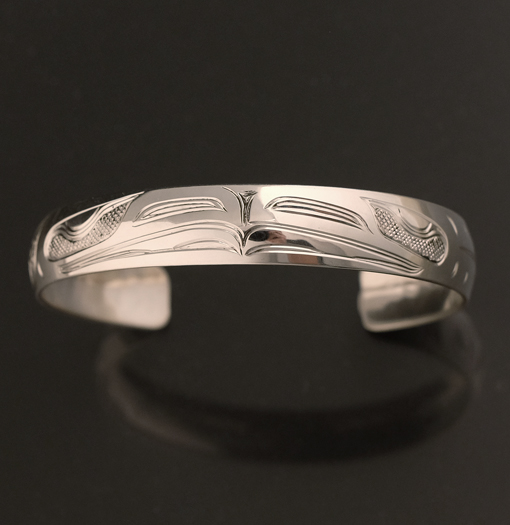 Two Ravens CuffCarved Sterling Silver
Two Ravens CuffCarved Sterling Silver- .5"w
SOLD -
 Eagle in Clouds CuffCarved Silver
Eagle in Clouds CuffCarved Silver- .5"w
SOLD -
 Lovebirds CuffCarved Silver
Lovebirds CuffCarved Silver- .5"w
SOLD -
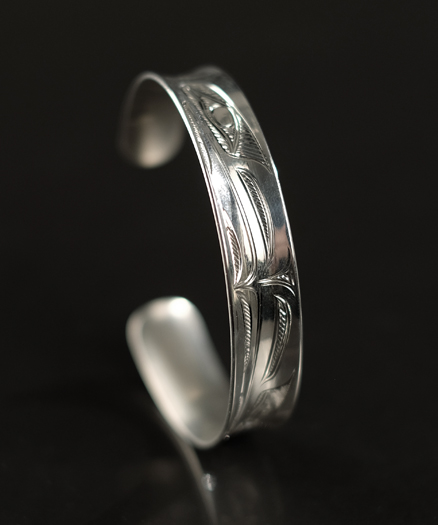 Ravens Concave Cuff – 1/2Sterling Silver
Ravens Concave Cuff – 1/2Sterling Silver- .5"w
SOLD -
 Herring & Bubbles Cuff – BraceletSterling Silver
Herring & Bubbles Cuff – BraceletSterling Silver- 1"w
SOLD -
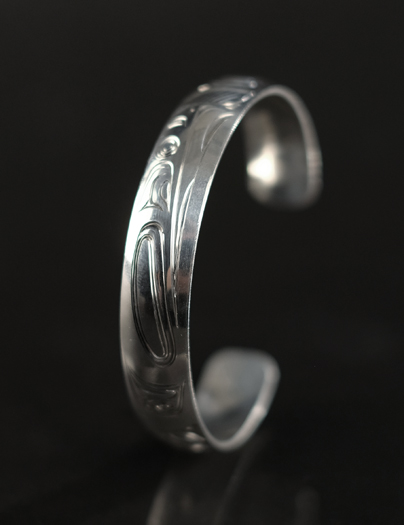 Raven Cuff – Bracelet .5inSterling Silver
Raven Cuff – Bracelet .5inSterling Silver- .5"w
SOLD -
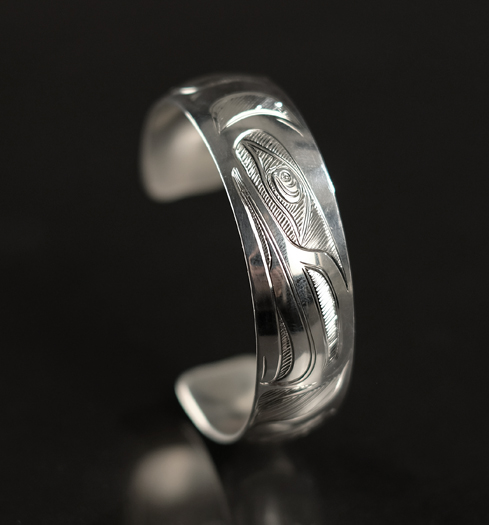 Raven Cuff – Bracelet 3/4inSterling Silver
Raven Cuff – Bracelet 3/4inSterling Silver- .75"w
SOLD -
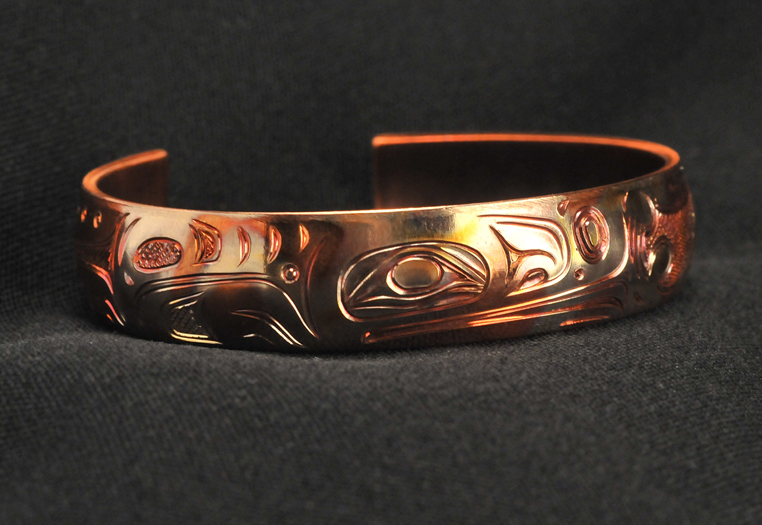 Copper Frog CuffOxidized Copper
Copper Frog CuffOxidized Copper- .5"h
SOLD -
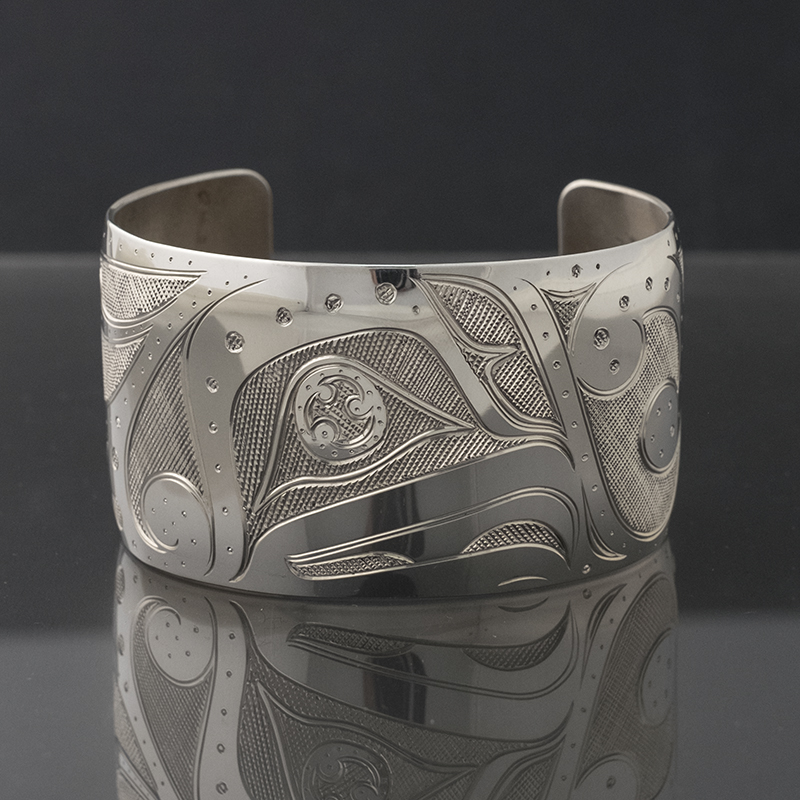 Silver Devilfish CuffSterling Silver
Silver Devilfish CuffSterling Silver- 1.5"h
SOLD -
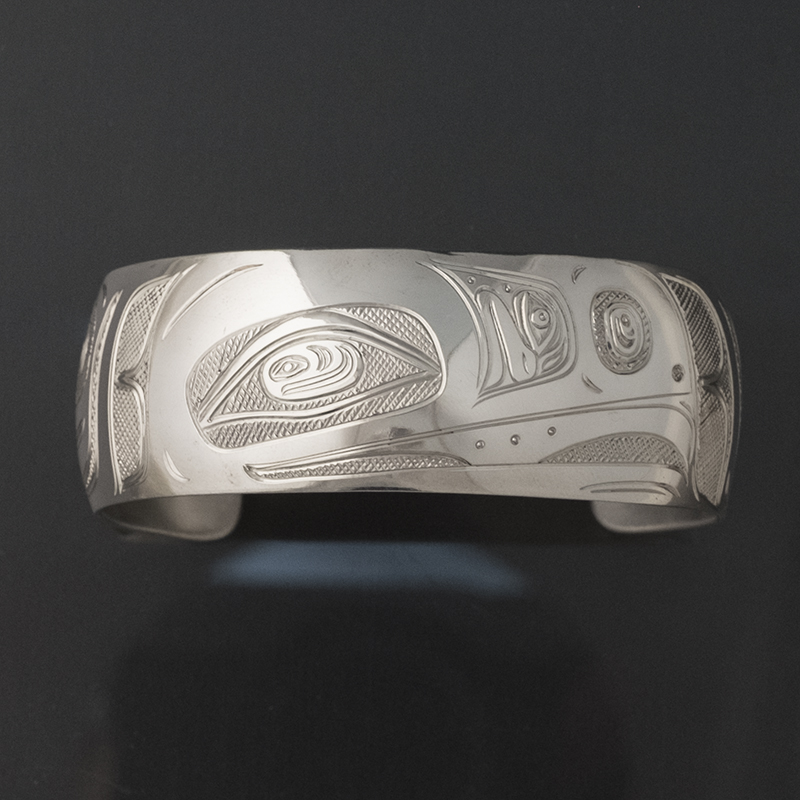 Silver Raven CuffSterling Silver
Silver Raven CuffSterling Silver- 1"h
SOLD -
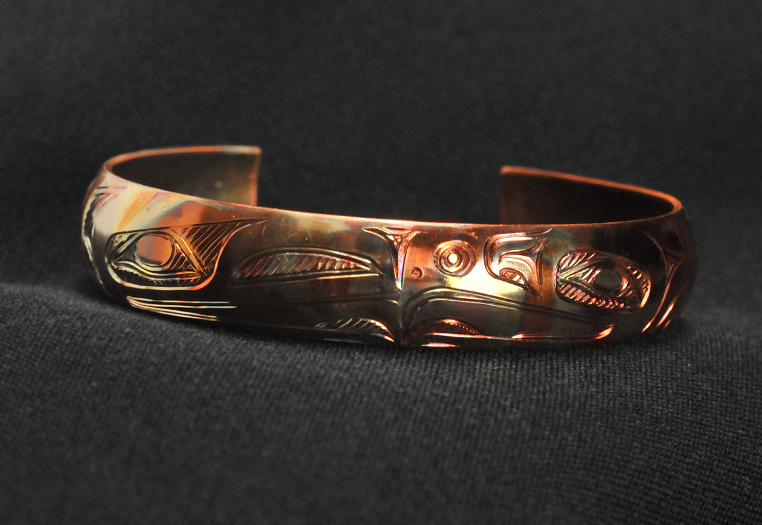 Copper Lovebirds CuffOxidized Copper
Copper Lovebirds CuffOxidized Copper- .5"h
SOLD -
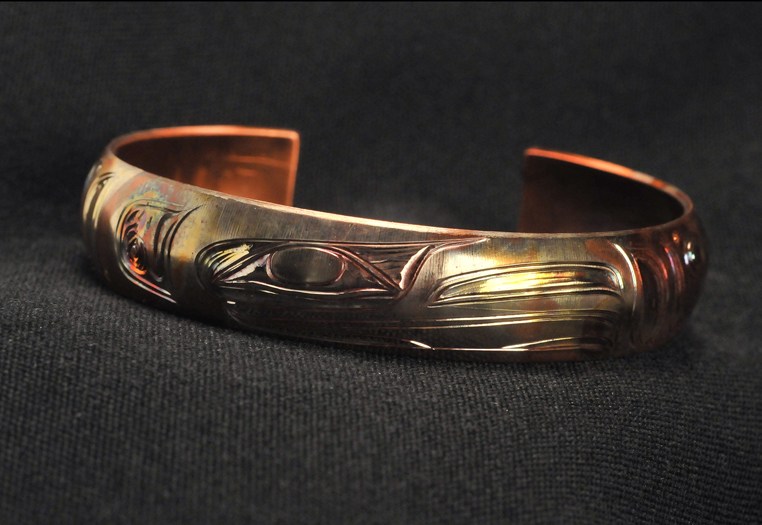 Copper Raven CuffOxidized Copper
Copper Raven CuffOxidized Copper- .5"h
SOLD -
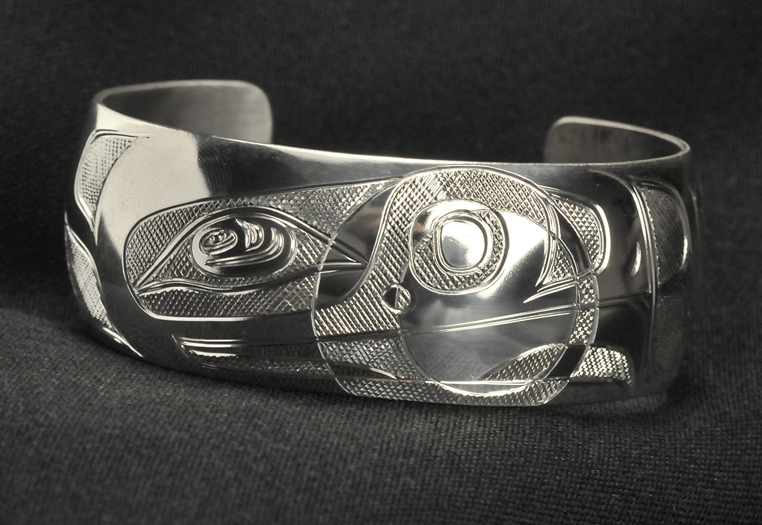 Silver Raven
Silver Raven
Bringing the Light CuffSterling Silver- 1"h
SOLD -
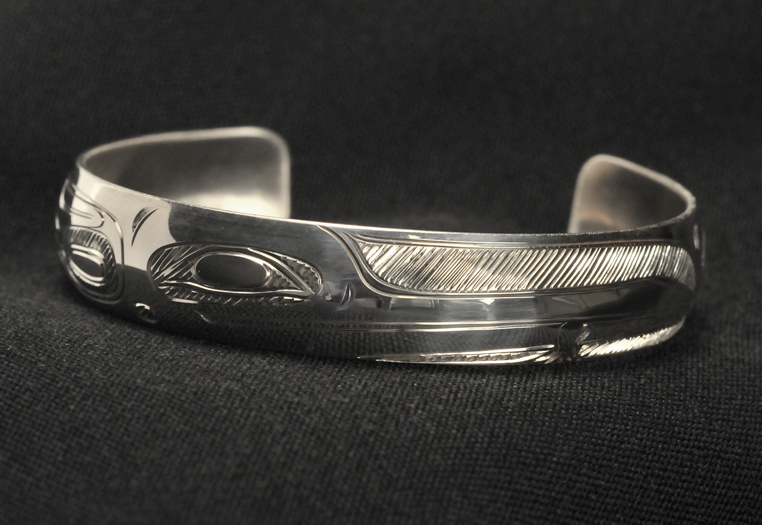 Silver Heron CuffSterling Silver
Silver Heron CuffSterling Silver- .5"h
SOLD -
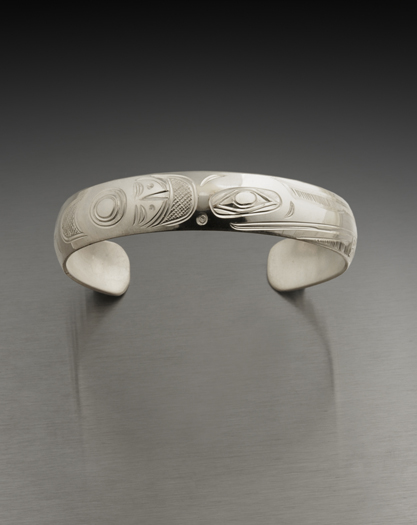 Egret Eating Fish CuffSterling Silver
Egret Eating Fish CuffSterling Silver- .5"w
SOLD -
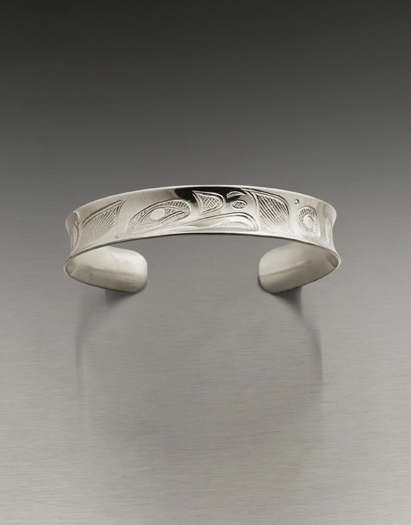 Raven Cuff BraceletSterling Silver
Raven Cuff BraceletSterling Silver- .5"w
SOLD -
 Eagle and Eaglet Cuff BraceletSterling Silver
Eagle and Eaglet Cuff BraceletSterling Silver- .5"w
SOLD -
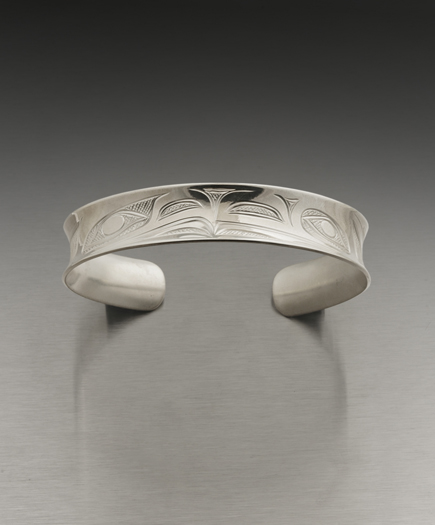 Two Ravens Cuff BraceletSterling Silver
Two Ravens Cuff BraceletSterling Silver- .5"w
SOLD -
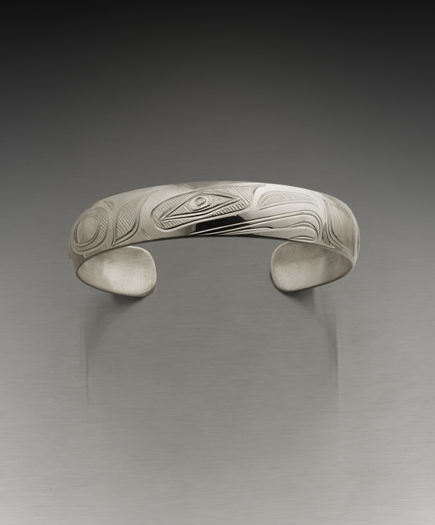 Eagle CuffSterling Silver
Eagle CuffSterling Silver- .5"w
SOLD -
 Wolf CuffSterling Silver
Wolf CuffSterling Silver- .5"w
SOLD -
 Wasco & Eagle Cuff BraceletSterling Silver
Wasco & Eagle Cuff BraceletSterling Silver- 1"w
SOLD -
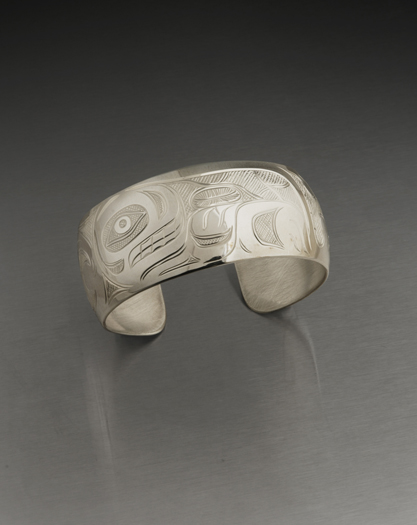 Sea Otter CuffSterling Silver
Sea Otter CuffSterling Silver- 1"w
SOLD -
 Devilfish CuffSterling Silver
Devilfish CuffSterling Silver- 1"w
SOLD -
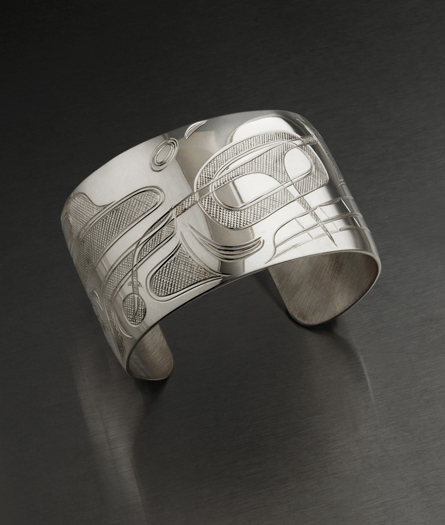 Orca Cuff BraceletSterling Silver
Orca Cuff BraceletSterling Silver- 1.5"w
SOLD -
 Copper Eagle CuffOxidized Copper
Copper Eagle CuffOxidized Copper- .5"h
SOLD -
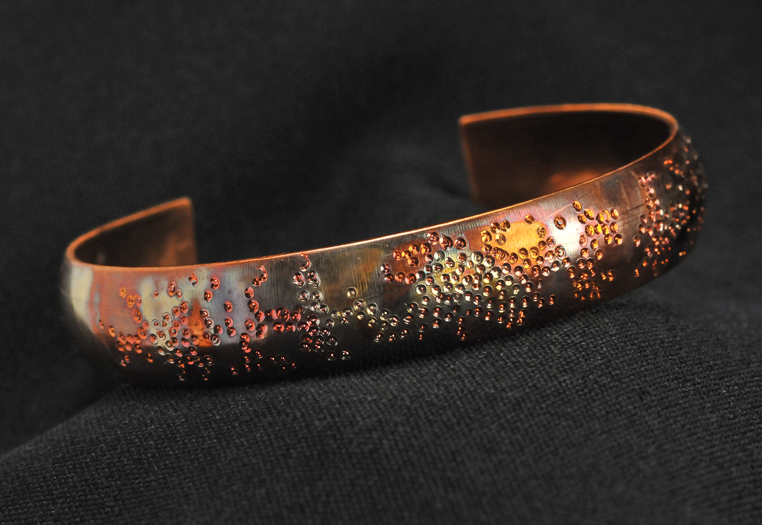 Field of Stars CuffOxidized Copper
Field of Stars CuffOxidized Copper- .5"h
SOLD
(b. 1979) Born in Sitka, Alaska, Nicholas Galanin has struck an intriguing balance between his origins and the course of his practice. Having trained extensively in ‘traditional’ as well as ‘contemporary’ approaches to art, he pursues them both in parallel paths. His stunning bodies of work simultaneously preserve his culture and explore new perceptual territory. Galanin comes from a long line of Northwest Coast artists – starting with his great-grandfather, who sculpted in wood, down through his father, who works in both precious metal and stone. Although Galanin’s parents separated when he was a child, he continued to spend important time with his father, especially working together in the studio. The artist looks back on those experiences now as a “very memorable part of [his] childhood” – as this sharing of art became a potent link to his heritage and a vehicle of cultural identity. Having always had an interest in creating, Galanin took on apprenticeships at an early age – first with his father and his uncle, then with other local, traditional artists. When he was about 18, he began to feel the strain of being pulled in two directions – working a day-job, with its requisite frustrations and energy drain, while simultaneously apprenticing in the arts. At that point he realized that he needed to commit himself totally to art-making, or it “wasn’t going to happen.” From early craft courses, he went on to study at the London Guildhall University (in London, England from 2000 to 2003), where he received a Bachelor’s of Fine Arts with honors in Jewelry Design and Silversmithing. Soon after, Galanin discovered a graduate arts program at Massey University in New Zealand that meshed perfectly with his interests and concerns, and in 2004 he began earning a Master’s degree there in Indigenous Visual Arts. The artist has commented that the Maori have established strong cultural programs, and that their initiatives are of tremendous interest to other indigenous groups. After finishing his graduate coursework, Galanin moved back to Sitka, which, he says, is a very interesting place to be – particularly in terms of what is happening with Native culture. That atmosphere helps him maintain a dual focus, continuing to create objects that are ‘traditional’ (or ‘customary,’ as he tags them), while also making a separate body of work that is contemporary. Although especially drawn to sculpture and video, Galanin’s medium can be “pretty much anything.” He begins by developing a vigorous concept (often based in cultural issues), and then he finds a way to express it. This is important to him as a means of retaining control over his work, since he has had numerous encounters with gallerists, collectors, and others who want to impose their own demands on the kinds of objects he creates. Before the arrival of Europeans, Galanin comments, artists worked freely, determining their own trajectory; he wants to reclaim that autonomy for himself, as the direction of choice for true creativity. Also gifted at working in video, Galanin has created a stunning piece titled Who We Are – in which single frames of 25,000 traditional Northwest Coast objects are collapsed into a 15-minute video loop. Silently flashing before the viewer, individual objects are impossible to separate from the diluvian flow. The speed of the piece, and its overload of images, evokes the superficiality of contemporary life, in which complex phenomena are reduced to sound-bytes or media spots. By arranging the art-works according to formal similarities, Galanin makes “categories of objects, such as baskets and bowls, gradually morph into each other” (Aldrich 2006). Fascinating though they are, the flickering transformations create a disturbing sense of moving all too fast, with forms melting into each other at a rate that defies comprehension or control.
